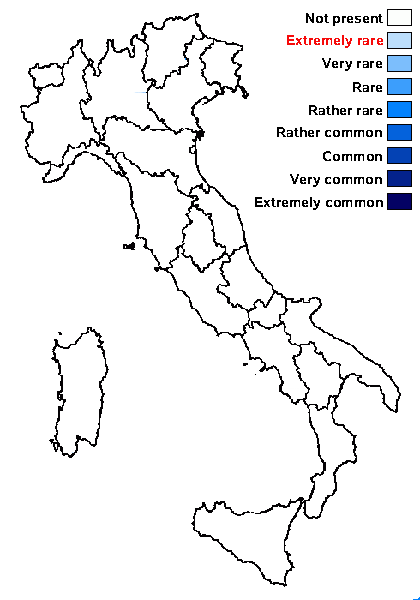Thelidium austriacum Zschacke
Hedwigia, 62: 106, 1920.
Synonyms:
Distribution:
Description: Thallus crustose, endosubstratic to hemiendosubstratic, thin, dirty white, continuous or finely cracked, sometimes poorly evident. Perithecia black, c. 0.35 mm across, partly immersed in the rock, with the upper part slightly projecting, leaving pits when they fall out. Involucrellum; exciple brown throughout, thicker near the ostiuole; hamathecium of periphyses and periphysoids, interascal filaments absent; hymenial gel I+ red (I+ blue at very low concentrations of I), K/I+ blue. Asci 8-spored, ellipsoid to clavate, I-, fissitunicate, the wall thickened above, with an ocular chamber, dehiscent by extrusion of a delicate rostrum. Ascospores 3-septate, hyaline, ellipsoid, 21-25 x 9-11 μm, often with a rounded and a slightly pointed end. Photobiont chlorococcoid. Spot tests: K-, C-, KC-, P-, UV-. Chemistry: without lichen substancesNote: a poorly known species of the Th. incavatum-group characterized by the small ascospores, found on limestone and only recorded from the Eastern Alps (Austria), at low elevations. To be looked for in Italy
Growth form: Crustose endolithic
Substrata: rocks
Photobiont: green algae other than Trentepohlia
Reproductive strategy: mainly sexual
Poorly known taxon in need of further study

Predictive model
Growth form: Crustose endolithic
Substrata: rocks
Photobiont: green algae other than Trentepohlia
Reproductive strategy: mainly sexual
Poorly known taxon in need of further study

Predictive model

